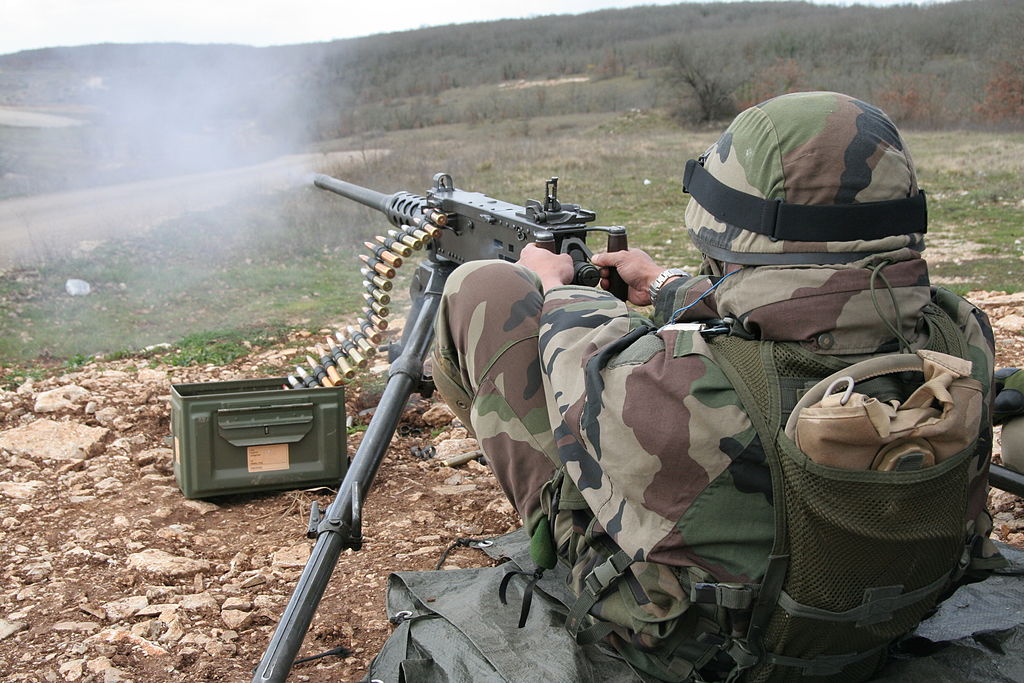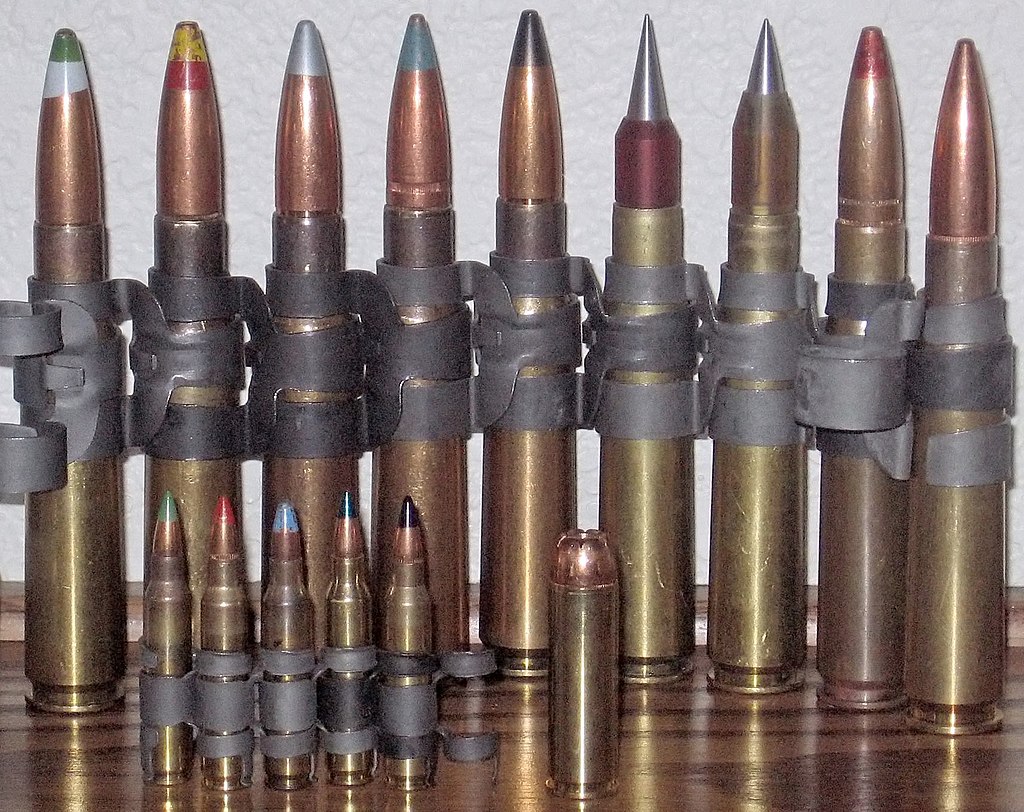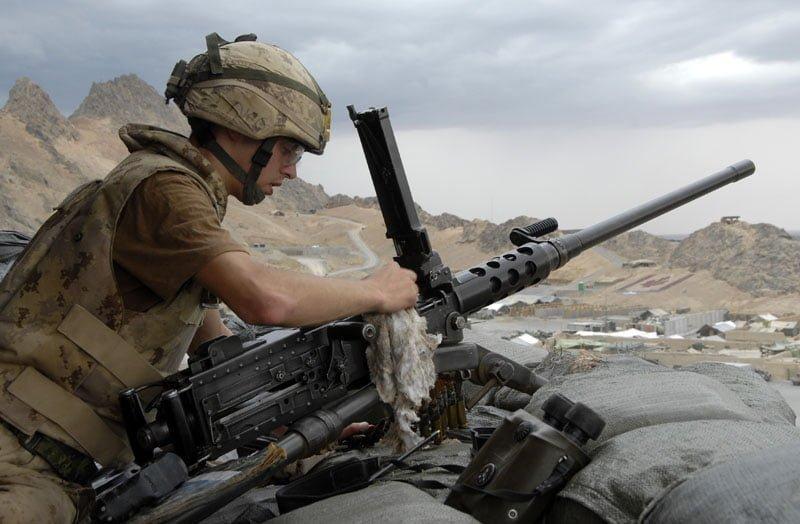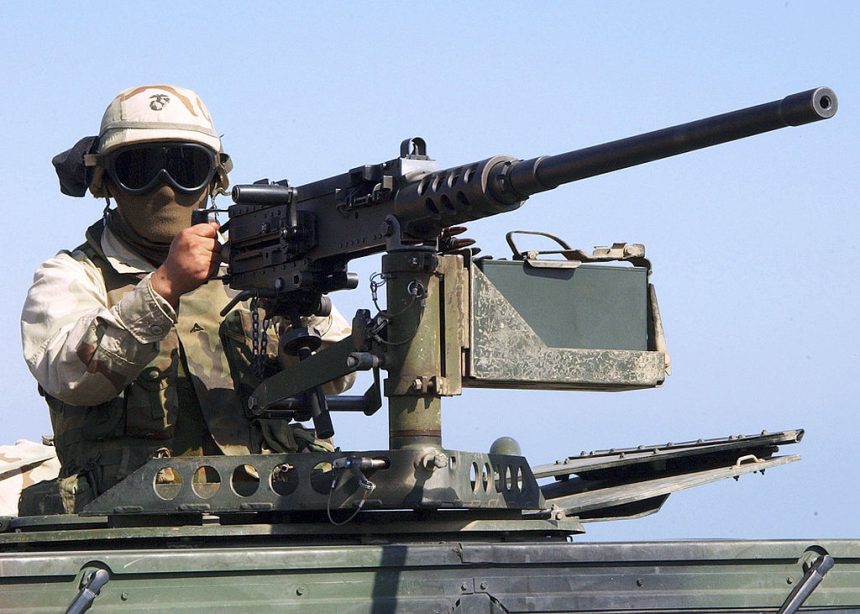There are none more notable than that of the 50. caliber M2 Browning machine gun, or the “Ma Deuce,” as it’s colloquially dubbed, is the longest-produced machine gun the world’s arms market has ever seen. The gun has been used extensively as a vehicle weapon and for aircraft armament by the United States since the 1930s. The latest version is designated as M2HB (Heavy barrel).
Introduction
This behemoth of a machine gun has faithfully and dependably served several generations of soldiers since the outbreak of World War II and has since appeared in every major armed conflict around the world in various models and configurations. From the dense urban cities of Western Europe to the humid jungles of Vietnam and the frozen steps of the 38th Parallel on the arid dustbin sandscapes of 21st century Afghanistan and everything in between.
The M2 Browning 50. cal has cemented itself as the poster child of 20th-century warfare, having been adopted as the primary heavy machine gun of all NATO member countries and other nations worldwide.
The M2 Browning is about as unavoidable in the modern theater of war. This swiss army knife of the machine gun world is utilized in various offensive and defensive roles, including but not limited to anti-aircraft, anti-armor, anti-personnel, and generally will anti-anything you decide to aim it at pull the trigger. Why the M2 Browning has stood the test of time and examine what makes this heavy machine gun the quintessential armament of the 21st century.
Design
The Browning heavy machine gun was designed towards the end of World War I. A large-caliber machine gun was developed in the USA at the direct request of General Pershing, the commander of the US Expeditionary Corps in Europe. He requested a large-caliber machine gun capable of destroying military aircraft and ground targets such as armored cars and tanks. US Army passed the task of developing such a gun to John Browning.
The task of developing ammunition for this new weapon was passed to the Winchester Arms company. This machine gun is similar to John Browning’s earlier M1919 machine gun, which was chambered for a standard rifle cartridge. Around 1917, Browning started redesigning his weapon for a larger caliber. His new machine gun was chambered for a much larger and more powerful 12.7×99 mm (.50 caliber) cartridge developed alongside this weapon by Winchester. That’s why sometimes this weapon is referred to as Browning .50 caliber machine gun.
After John Browning died in 1926, other designers finalized this weapon’s design. This machine gun entered service with the US armed forces in 1933 and was manufactured by Colt. The design of this weapon proved to be highly successful. Since the 1930s, it has been used extensively to the present day. This remarkable weapon has seen service during countless wars all over the world.
Only during World War II nearly 2 million of these heavy machine guns were produced. It has been in production longer than any other machine gun, and its production continues. Furthermore, the M2 machine gun has been used longer than any other small arm in the US armed forces inventory, except the M1911 pistol, which John Browning also designed.
The Browning M2 is an air-cooled, belt-fed machine gun. The M2 fires from a closed bolt operated on the short recoil principle.
Effective range and weight
The M2 Browning boasts an effective range of 1830 meters, 2 000 yards, and a maximum effective range of 2000 meters or 2200 yards when fired from the M3 tripod. In its ground portable crew operator configuration, the M2HB weighs 38 kilograms (84 pounds), and the assembled M3 tripod adds 20 kilograms to the overall weight, 44 more pounds in this configuration.

Ammunition
This weapon is typically used with the standard ball, tracer, armor-piercing, armor-piercing incendiary, or armor-piercing incendiary tracer rounds. There is also an M962 SLAP-T (Saboted Light Armor Penetrator) round fitted with a tungsten penetrator. The M2 Browning is fed from disintegrating belt. Spent cartridge cases are extracted down. It can be adapted to feed from the left or right side of the weapon by reinstalling some parts. This conversion takes two minutes. The charging handle can also be changed from the right to the left-hand side.

The .50 caliber cartridge consists of a cartridge case primer propelling charge, and the bullet only refers to the small arms projectile that’s propelled out of the barrel. There are eight types of ammunition issued for use in the M2 Browning .50 caliber machine gun, with the tips of the various rounds color-coded to indicate their type; these include:
- standard ball tracer
- armor-piercing
- incendiary armor-piercing
- contender
- retracer
- dummy rounds
- blanks
Ammunition boxes typically feature 100 to 200 rounds.
Trigger mechanism
The V-shaped butterfly trigger is located at the very rear of the weapon with a spade handle grip on either side, the ball release is located in the center, and standard configurations feature a rear-type leaf side. The spade handles are gripped, and the butterfly trigger is depressed, with one or both thumbs discharging the weapon. Recent modifications to the rear buffer assemblies have seen squeeze triggers mounted to the hand grips forgoing the traditional butterfly triggers in stark opposition to virtually all other modern machine guns.
The M2 doesn’t feature a conventional safety mechanism; instead, some soldiers resort to improvised measures to prevent accidental discharge. One such method is to insert an expended shell casing between the butterfly trigger to avoid depression, as the M2 Browning was designed to operate in multiple configurations.
Firing modes
The M2 Browning has slow and rapid firing modes. It can fire full-auto as well as single shots. This weapon fires from a closed bolt. Depending on the model, the M2 Browning features varying cyclic rates of fire. For instance, the M2HB air-cooled ground gun has a cyclical rate of 450 to 575 rpm, while the aircraft configurations such as the AMM2 and the AMM3 feature a cyclic rate of 750 to 850 rpm and 1200 rpm.
Respectively these maximum cyclic rates are mainly hypothetical; a sustained fire at such rate risks wearing out the barrel’s bore within a few thousand rounds and will require a replacement. But if going all Rambo isn’t your style, the M2HB can be selected to fire semi-automatic single shots at less than 40 rpm. Slow and rapid firing modes use five to seven-round bursts with different pause durations between bursts.

If the ball release is locked in place by the bolt latch release lock on the buffer tube sleeve, the M2 will function in fully automatic mode; alternatively, unlocking the bolt release into the up position will enable single-shot semi-automatic firing. After pressing the bolt release latch to send the bolt forward, the closed bolt firing cycle made the M2 usable as a synchronized machine gun on aircraft before World War II.
Sights
The M2 comes with standard iron sights. However, various telescopic and night sights can be installed using appropriate mountings. The original M2 had no manual safeties. However, recent versions of this heavy machine gun are fitted with manual safety, located next to the trigger. The price of this machine gun is around $14 000. The basic Browning M2 has many variants. This heavy machine gun was intentionally designed to operate in many configurations. The main infantry versions are outlined below.
Manufacturer
General Dynamics and US Ordnance companies currently manufacture the current M2HB (Heavy Barrel) machine gun. Since the 1930s, this weapon has been licensed-produced by FN Herstal of Belgium. Currently, the M2 Browning is used by about 100 countries all over the world. It is the primary heavy machine gun of NATO countries.
There’s likely a possibility that the M2 Browning, in one form or another, will retain its place on the modern battlefield just as it has for the last hundred years.
Technical specifications
| Country of origin: | United States |
| Entered service: | 1933 |
| Caliber: | 12.7 x 99 mm (.50 BMG) |
| Weight (empty): | 38 kg |
| Length: | 1 650 mm |
| Barrel length: | 1 140 mm |
| Muzzle velocity: | ~ 820 m/s |
| Cyclic rate of fire: | 450 – 600 rpm |
| Practical rate of fire: | 80 – 100 rpm |
| Magazine capacity: | Belt-fed |
| Sighting range: | – |
| Range of effective fire: | 1,830 m |



